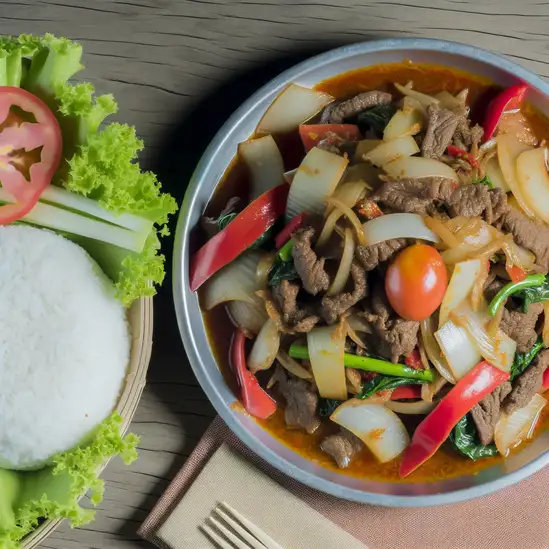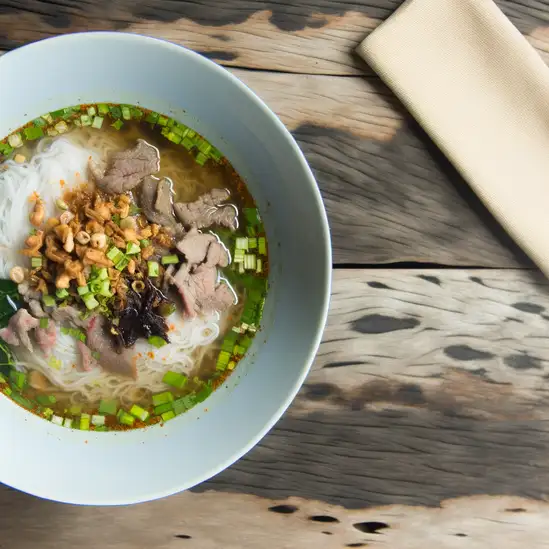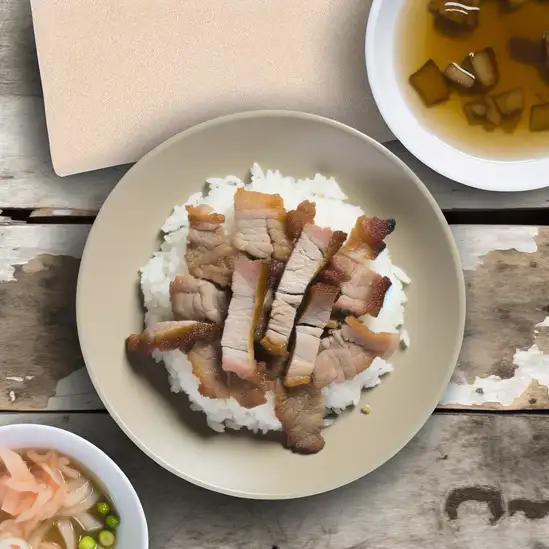


Phnom Penh feels like a city caught between moments—where the past and present hum together in a lively,unexpected rhythm. Walking along the riverfront at sunset,you’ll catch the warm glow of golden light bouncing off the Tonle Sap and Mekong rivers,while the chatter of locals and the distant honk of tuk-tuks create a soundtrack that’s both chaotic and comforting. The air carries a mix of aromas:sizzling street food,fresh herbs,and the faint scent of incense from nearby temples. It’s a place where history isn’t just in museums but etched into the streets and faces of the people. The city’s character is raw and real,with grand colonial buildings standing shoulder to shoulder with bustling markets and sleek new cafes. You can lose yourself in the maze of Russian Market stalls,where vendors call out in a friendly,rapid-fire Khmer,offering everything from handwoven scarves to spicy grilled meats. At night,the city pulses with energy—bars and eateries spill onto sidewalks,and the smell of lemongrass and chili fills the air as you try dishes like fish amok or fresh spring rolls. What makes Phnom Penh truly unforgettable is its resilience and warmth. Despite its turbulent history,the city welcomes you with open arms and a genuine smile. It’s a place where every corner tells a story,and every meal,every conversation,feels like an invitation to understand a culture that’s vibrant,complex,and deeply human.
The information on this page is currently being reviewed by Tripkliq and should be used as a guide only
Eng word: Hello
Eng pronunciation: suo sdei
Local language: សួស្តី
Eng word: Goodbye
Eng pronunciation: lea howie
Local language: លាហើយ
Eng word: Thank you
Eng pronunciation: aw kohn
Local language: អរគុណ
Eng word: How much
Eng pronunciation: bon man
Local language: ប៉ុន្មាន
Eng word: Toilet
Eng pronunciation: bong kohn
Local language: បង្គន់
Eng word: Help me
Eng pronunciation: chouy khnhom
Local language: ជួយខ្ញុំ
Eng word: Yes
Eng pronunciation: baat (for males) / chaa (for females)
Local language: បាទ/ចាស
Eng word: No
Eng pronunciation: te
Local language: ទេ
Eng word: Excuse me
Eng pronunciation: som toh
Local language: សូមទោស
Phnom Penh, the capital city of Cambodia, was established in 1372 when a wealthy widow named Daun Penh found four Buddha statues in a tree floating by the riverbank, leading her to set up a hill (phnom in Khmer) and a temple (wat) for them, thus giving rise to the name Phnom Penh, meaning 'Penh's hill'.
Located within the Royal Palace compound, the Silver Pagoda houses many national treasures including gold and jeweled Buddha statues. Among them, the most notable is a small 17th century baccarat crystal Buddha and a life-sized gold Maitreya Buddha decorated with 9584 diamonds.
The Royal Palace in Phnom Penh has been the residence of the King of Cambodia since the late 1860s, with its beautiful architecture and elaborate gardens. It symbolizes the heart of the Khmer kingdom.
The Independence Monument in Phnom Penh was inaugurated in 1958 to celebrate Cambodia's independence from France in 1953. Its design reflects the style of a lotus-shaped stupa, seen in historical Khmer architecture, symbolizing freedom, and serving as a memorial to Cambodia's war casualties.
Phnom Penh is notable for its beautiful French colonial architecture, a legacy of the French colonial era, with many buildings still preserved today. These structures reflect a time when Phnom Penh was known as the 'Pearl of Asia'.
Wat Phnom is the central point of Phnom Penh and the tallest religious structure in the city. It stands on a 27-meter-high hill and is the origin of the city's name. It is a significant historical and cultural landmark, with locals and visitors coming to pray for good luck.
Vann Molyvann, a Cambodian architect, created many iconic buildings in Phnom Penh during the 1960s, contributing significantly to the cityscape. His works, including the Olympic Stadium and the Independence Monument, display a blend of traditional Khmer and modern architectural styles.
Central Market, also known as Phsar Thmei, is a landmark market in Phnom Penh, known for its distinctive Art Deco building. Built in 1937, it is one of the largest markets in Cambodia, selling everything from food to gold.
Sisowath Quay is a vibrant and scenic riverside promenade in Phnom Penh popular with both locals and tourists. It is lined with cafes, restaurants, and historical buildings, offering a pleasant place for a leisurely stroll with views of the Tonle Sap and Mekong rivers.
In Phnom Penh, the most common Power Adaptor is Type A, Type C, Type G.







Fish Amok is a traditional Cambodian dish made with fish, coconut milk, and a variety of herbs and spices. It is steamed in a banana leaf, giving it a unique flavor and presentation.

Lok Lak is a popular Cambodian stir-fry dish made with marinated beef, onions, tomatoes, and a tangy sauce. It is typically served with rice and a side of fresh vegetables.

Kuy Teav is a Cambodian noodle soup made with a flavorful broth, rice noodles, and a variety of toppings such as pork, beef, or seafood. It is a comforting and satisfying dish enjoyed by locals and visitors alike.

Bai Sach Chrouk is a popular breakfast dish in Cambodia consisting of grilled pork served over rice with a side of pickled vegetables. It is a simple yet delicious dish that is enjoyed throughout the country.
Bangkok is one of those cities that grabs you the moment you step out into its bustling streets. There’s this electric energy in the air—a mix of honking tuk-tuks,sizzling street food stalls,and the chatter of locals weaving through markets. The city feels alive,like it’s constantly moving and breathing,yet somehow it balances this chaos with moments of serene beauty,like the golden spires of temples catching the afternoon sun or quiet canals reflecting the sky.
Walking through Bangkok,you’ll be hit by a whirlwind of scents:fragrant jasmine from flower vendors,the sharp tang of lemongrass and chili from street carts,and the sweet aroma of mango sticky rice tempting you at every corner. The colors are just as vivid—neon signs flicker alongside traditional wooden shophouses,and monks in saffron robes glide past modern skyscrapers. It’s a city where old and new dance together effortlessly.
What really makes Bangkok special is its warmth and openness. The people here have a genuine kindness that shines through,whether you’re bargaining at Chatuchak Market or sharing a laugh over a bowl of spicy boat noodles. The culture is rich and layered,from the intricate rituals at Wat Pho to the lively festivals that light up the streets. Visiting Bangkok feels like stepping into a story that’s still unfolding,full of surprises and moments that stay with you long after you leave.
Ho Chi Minh City pulses with an energy that’s impossible to ignore—like the city itself is alive,breathing through its bustling streets and vibrant markets. The moment you step out,you’re greeted by a symphony of honking scooters weaving through the maze of narrow alleys,the sizzling sound of street food grilling on every corner,and the rich aroma of fresh herbs mingling with strong Vietnamese coffee. It’s chaotic but in the best way,a place where tradition and modernity collide in colorful,unexpected ways.
Walking through District 1,you’ll catch glimpses of French colonial architecture standing proudly beside sleek skyscrapers,while locals sip iced cà phê sữa đá at tiny plastic stools,chatting animatedly. The city’s character is raw and real—no polished tourist traps here,just genuine moments and warm smiles. At night,the streets transform as neon signs flicker on,and the scent of grilled seafood and sweet bánh mì fills the air,inviting you to taste the city’s soul.
What makes Ho Chi Minh City truly unforgettable is its resilience and spirit. It’s a place where history whispers from the War Remnants Museum and the Cu Chi Tunnels,yet life moves forward with a youthful,entrepreneurial buzz. Whether you’re savoring a bowl of pho at dawn or exploring vibrant art galleries and rooftop bars,the city wraps you in its embrace,making you feel like you’re part of its ongoing story.
Imagine stepping into a place where the air hums with the gentle rhythm of waves lapping against sun-warmed shores,and the scent of salty sea mingles with fragrant street food stalls. That’s Phuket for you—a vibrant island that feels alive in every sense. It’s not just the stunning beaches that grab you,but the way the island pulses with a laid-back energy,where colorful markets buzz with chatter and the aroma of grilled seafood fills the air. Walking through the old town,you’ll find charming Sino-Portuguese buildings painted in pastel hues,their shutters creaking softly in the tropical breeze,while tuk-tuks zip by,adding a playful soundtrack to your explorations.
Phuket’s character is a beautiful blend of tradition and liveliness. Temples with golden spires peek out from lush greenery,inviting quiet moments of reflection,while nearby,night markets burst with life—vendors calling out,sizzling woks,and the sweet tang of mango sticky rice tempting your taste buds. The island’s culture is warm and welcoming,with locals who smile easily and share stories over cups of strong Thai coffee or fresh coconut water.
What makes Phuket truly special is how it wraps you in its embrace—whether you’re watching a fiery sunset from a cliffside bar,diving into crystal-clear waters teeming with vibrant marine life,or simply savoring the spicy kick of a freshly made curry. It’s a place that invites you to slow down,soak in the colors,sounds,and flavors,and leave with a heart full of unforgettable moments.
If you’re dreaming of a place where the pace slows just enough to let you breathe in the salty sea air and feel the warm sun kiss your skin,Koh Samui is that kind of magic. The island hums with a laid-back energy that’s both soothing and invigorating—like a gentle invitation to explore without rushing. Palm trees sway lazily against a backdrop of turquoise waters,and the soft crash of waves creates a soundtrack that instantly melts away any stress. Walking along the beaches,you’ll catch the scent of frangipani mingling with the faint aroma of grilled seafood from nearby beachside shacks.
What really makes Koh Samui special is its blend of vibrant local culture and natural beauty. The island’s temples,like the striking Big Buddha,offer moments of quiet reflection amid the tropical buzz. At night,the markets come alive with colorful stalls selling everything from fresh mango sticky rice to spicy papaya salad,each bite bursting with bold,fresh flavors that tell stories of the land and sea. Friendly locals greet you with warm smiles,eager to share their traditions and stories.
Beyond the beaches,there’s a wild side to Koh Samui—lush jungles with hidden waterfalls,secret viewpoints that reward you with breathtaking panoramas,and cozy cafes tucked away where you can sip rich Thai coffee while watching the world go by. It’s a place that feels both familiar and wonderfully new,where every moment invites you to slow down,savor,and soak in the island’s unique rhythm.
Imagine stepping into a place where the ocean breeze carries the scent of salt and sizzling street food,and the rhythm of life feels both relaxed and vibrant—that’s Da Nang. This city pulses with an easygoing energy,where modern skyscrapers stand alongside ancient temples,and the laughter of locals blends with the gentle crash of waves. Walking along the Han River at dusk,you’ll catch the golden glow of the Dragon Bridge lighting up the night,its fiery breath a spectacle that feels almost magical.
Da Nang’s streets are alive with the aroma of fresh seafood grilling on open flames,mingling with the sweet fragrance of tropical fruits from bustling markets. The city’s character shines through its people—warm,welcoming,and proud of their rich heritage. You can hear the chatter of vendors,the clinking of glasses in cozy cafes,and the distant hum of motorbikes weaving through traffic,all creating a soundtrack that’s uniquely Da Nang.
What really sets this city apart is its blend of natural beauty and cultural depth. Just a short ride away,you can explore the Marble Mountains,where limestone caves and pagodas invite quiet reflection,or relax on My Khe Beach,feeling the soft sand between your toes. And when night falls,the city transforms with lively night markets and riverside bars,where you can savor local dishes like mi quang or fresh spring rolls,each bite bursting with flavor and history. Da Nang isn’t just a place to visit—it’s a place to feel alive.
Bali feels like stepping into a vibrant dream where every corner pulses with life and warmth. From the moment you arrive,there’s this unmistakable energy—part spiritual,part playful—that wraps around you like a soft,tropical breeze. Imagine waking up to the gentle rustle of palm leaves and the distant sound of waves crashing against volcanic black sand beaches. The air carries a mix of frangipani blossoms and salty sea spray,instantly grounding you in the island’s natural beauty.
What really makes Bali special is its rich culture woven into everyday life. You’ll see locals in colorful sarongs offering flowers at temple steps,hear the rhythmic beat of gamelan music drifting through the air,and catch glimpses of intricate wood carvings and vibrant paintings in small artisan shops. The island’s spirituality isn’t just something you observe—it’s something you feel,a quiet presence that invites you to slow down and connect.
And then there’s the food—oh,the food! Freshly grilled satay,fragrant nasi campur bursting with spices,and tropical fruits so sweet they almost taste like candy. Whether you’re dining in a bustling market or a cliffside café overlooking the ocean,every bite feels like a celebration of Bali’s rich flavors and traditions. Honestly,Bali isn’t just a place you visit; it’s a place that stays with you,long after you’ve left.
Some money changers may give incorrect exchange rates or use sleight of hand to shortchange tourists.
Individuals dressed as monks may approach tourists for donations, but they are not genuine monks and keep the money for themselves.
Unlicensed guides may offer their services and provide incorrect or misleading information about tourist sites.
Tourists are lured into buying fake or overpriced gemstones, often with promises of high resale value.
Some hotels may overcharge or add extra fees to the bill, knowing that tourists are less likely to dispute charges in a foreign country.
Tourists may be accused of damaging rented motorbikes and are forced to pay for repairs they did not cause.
Crowded areas and tourist spots are common places for pickpockets to operate, targeting wallets, phones, and other valuables.
Some restaurants may add hidden charges or inflate bills, especially if they know the customer is a tourist.
Children or women with babies may beg for money, often part of organized groups that exploit them.
Tuk-tuk drivers may quote exorbitant prices for short rides, especially to tourists who are unfamiliar with local rates.
Cambodia has strict laws against the possession, use, and trafficking of illegal drugs. Penalties can be severe, including long prison sentences and heavy fines. Tourists should avoid any involvement with illegal drugs to prevent legal trouble. Even small amounts of drugs can lead to serious consequences.
In Phnom Penh, smoking is generally allowed in public places, but there are restrictions in certain areas such as hospitals, schools, and government buildings. Many restaurants and bars may have designated smoking areas. It is advisable to look for 'No Smoking' signs and respect local regulations to avoid fines.
Vaping is not specifically regulated in Cambodia, including Phnom Penh. However, it is recommended to follow the same guidelines as smoking. Use vaping devices in designated smoking areas and be mindful of local customs and regulations to avoid any potential issues.
What are other people saying about Phnom Penh?
Recent Social posts about Phnom Penh
There is nothing to show you for now.